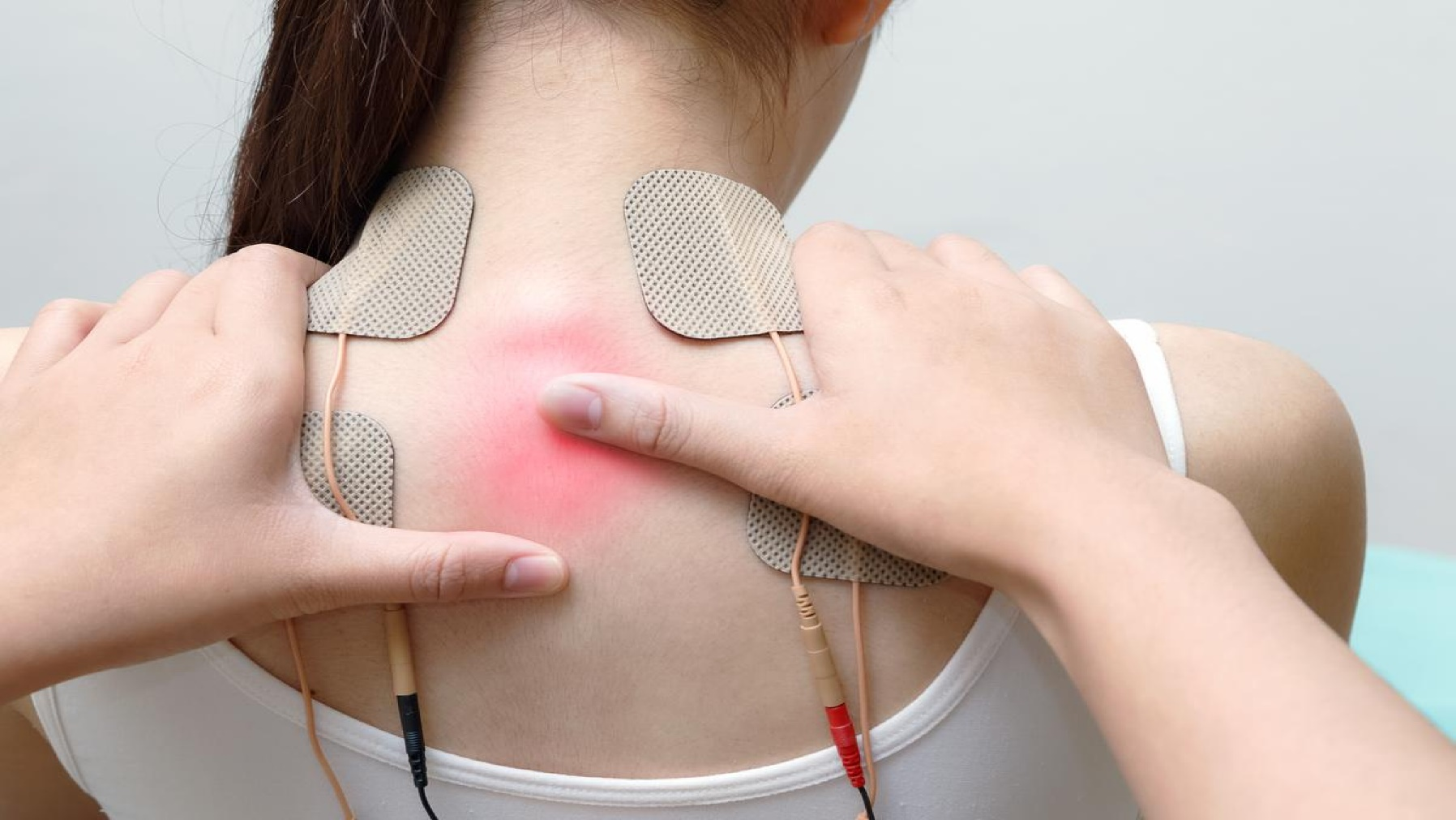Have you ever touched something that was lit up and felt it tingle? If so, describe the experience. Imagine harnessing that sensation for therapeutic purposes. That’s precisely what electrical stimulation therapy in chiropractic care does. Dive in with us as we explore this intriguing treatment method, its benefits, potential drawbacks, and why chiropractors are buzzing about it.
Chiropractic electrical stimulation therapy for what?
Chiropractors utilize e-stim, or electrical stimulation therapy, to treat various conditions by applying modest electrical pulses through the skin to the underlying muscles and nerves. This treatment has the potential to alleviate discomfort, boost local blood flow, and speed recovery at the affected sites.
To Explain:
- Muscle Contraction: The electrical pulses cause muscles to contract and relax, similar to when you exercise. This can help strengthen weak muscles and improve circulation.
- Pain Relief: The electrical pulses can block pain signals from reaching the brain, providing relief from discomfort.
- Increased Blood Flow: Repeated muscle contractions increase blood flow to the area, promoting healing.
Disadvantages of Electrical Stimulation:
While e-stim offers numerous benefits, it’s essential to be aware of potential drawbacks:
- Skin Irritation: Some people might experience skin irritation or minor burns from the electrodes.
- Not Suitable for Everyone: Those with pacemakers, pregnant women, and individuals with certain health conditions should avoid e-stim.
- Temporary Relief: E-stim often provides temporary pain relief, meaning it might not address the root cause of the pain.
The TENS Unit and Chiropractic Care:
One can question if the e-stim is similar to the TENS (Transcutaneous Electrical Nerve Stimulation) unit. It’s an electronic stim!
Do Chiropractors Use a TENS Unit?
Absolutely! Many chiropractors incorporate TENS units into their treatment plans. The TENS unit is a small, portable device that sends electrical pulses to specific areas of the body to alleviate pain.
Why Do Chiropractors Use TENS?
- Non-Invasive Pain Relief: TENS provides a drug-free alternative for pain relief, making it an attractive option for those wary of medications.
- Flexibility: The portable nature of TENS units allows patients to use them at home, extending the benefits of their chiropractic visit.
- Complementary Treatment: TENS can be used alongside other chiropractic treatments, enhancing overall effectiveness.
Like Electrical Stimulation Therapy, you may also like to read Dry Needling for Piriformis Syndrome and Bulging Discs
Humanizing the Experience:
Imagine you’re a muscle, just hanging out, doing your thing. Suddenly, a wild electrical pulse appears! It’s like a mini workout without hitting the gym. That’s e-stim for you. Electrical currents in the human body are a well-established fact, despite their Star Trek-like appearance. Although the concept of internal energy flow may sound like something from a science fiction movie, it has practical, real-world applications. Despite their science fiction-like appearance, therapies that inject electricity into the body have been used successfully. Despite seeming like something from a science fiction movie, using electric currents to treat patients is a tried-and-true medical technique.

Frequently Asked Questions About Electrical Stimulation Therapy
Here are some of the frequently asked questions about Electrical Stimulation Therapy…
Why do chiropractors use electrical stimulation, exactly?
Many muscular problems are treated by chiropractors with the use of electrical stimulation. Stimulating muscular and nerve tissue with currents of electricity is one method. Some possible benefits are less pain, better blood flow, fewer muscle cramps, and a quicker recovery. It is often used with spinal adjustments and massage to help people get better faster. When your chiropractor recommends e-stim treatment, remember that it’s meant to be a temporary solution to help get your life back on track.
What are the objectives of electrical stimulation when used by chiropractors?
Many muscular problems are treated by chiropractors with the use of electrical stimulation. Currents of electricity may be used to activate nerves and muscles, which is one approach. You could have reduced discomfort, improved circulation, fewer muscle spasms, and quicker recovery. It often goes with massages and chiropractor treatments.
How commonly does chiropractic use electrical therapy?
Chiropractors use electric therapy ranging from interference currents to electrical muscle stimulation to nerve stimulation through the skin (TENS). Pain, inflammation, and musculoskeletal function may all benefit from these approaches.
The usage of TENS units by chiropractors and why?
Chiropractors often utilize electrical nerve stimulation through the skin (TENS) devices to treat pain. Natural medicines called endorphins are released, blocking pain signals before they reach the brain. Both acute and persistent pain may benefit from this method, and no medication is required.
What electronic device do chiropractors use?
TENS units, infrared cold lasers, electrical muscle stimulators, ultrasound devices, and other electronic devices are all used by chiropractors. In addition to alleviating pain, these devices may decrease inflammation, activate muscles, and speed up healing.
What are the disadvantages of using electricity to stimulate?
Some disadvantages of electrical stimulation might include:
- Potential discomfort or irritation at the site of application.
- Not suitable for all patients, such as those with certain medical conditions or implanted devices.
- May provide only temporary relief.
- Requires professional guidance for proper use.
What are the side effects of electrical stimulation?
Side effects of electrical stimulation can include:
- Skin irritation or redness.
- Temporary discomfort or pain.
- Muscle twitching or spasms.
- Potential interference with other medical devices.
Who should not use electrical stimulation?
The electrical stimulation should not be used by individuals with:
- Pacemakers or other implanted electronic devices.
- Certain heart conditions.
- Epilepsy.
- Pregnancy (in some cases, depending on the area being treated).
- Open wounds or infections at the site of application.
Can electrical stimulation damage nerves?
Electrical stimulation is widely accepted as safe when given appropriately and under the supervision of a competent healthcare expert. However, nerve injury or other issues may result from inappropriate usage, such as incorrectly applying a high current or incorrectly positioning the electrodes.
Conclusion: Electrical Stimulation Therapy
The numbing or tingling sensations accompanying electrical stimulation therapy and its curative results have the chiropractic community in a frenzy. Although it is not a panacea, it relieves some people from their suffering. Despite the drawbacks and therapeutic benefits, chiropractors increasingly use electric stimulation therapy. It’s not a panacea, but it is a novel method of relieving discomfort for many individuals. Remember this for your subsequent chiropractic adjustment, and see if your doctor thinks e-stim may be a good option.
About Author
Dr. Jeremiah Carlson is a licensed chiropractor serving the Jacksonville community. Dr. Carlson has been improving Jacksonville’s health for over 15 years. As a chiropractor with experience, Dr. Carlson is committed to finding the proper diagnosis while promoting optimal health and well-being of his patients. Following diagnosis he will evaluate for misalignments in the spine and then use chiropractic manipulation to correct them. Correcting spinal misalignments can reduce joint pain, relax spasmed muscles and calm overactive nerves. Dr. Carlson’s approach is to create balance between the joints, muscles and nerves to reduce or eliminate pain.



